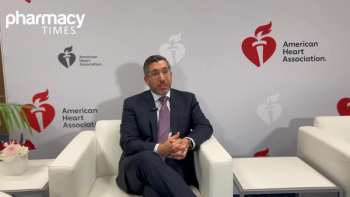
Talking Pill Bottles: Boom or Bust in the Digital Health Era?
A recent study in JAPhA addresses the findings of using talking pill bottles in patient care, but other companies using newer technology may have a better edge.
Just as it sounds, “talking pill bottles” (TPBs) are devices designed to provide verbal information in conjunction with traditional pill bottles dispensed by pharmacies to aid in those with low health literacy.
Ideally, a health professional would record verbal instructions and cues for patients via a TPB, so the patient had a better understanding of what medication they were taking and pertinent instructions and counseling points. These things have been around for the past decade, more or less, and sell for anywhere between $10-$60 a piece. Nonetheless, take-up of such devices has not seen a large market and they still remain on the wayside as an intervention for patient care.
What’s New?
A publication in the Journal of the American Pharmacists Association (JAPhA) evaluated the impact of TPBs on those with low health literacy and hypertension as a tool to help improve efficacy and adherence to therapy. The study was conducted by Lam and colleagues in thanks to an National Institutes of Health grant.
The study was a 90-day RCT trial conducted at 2 community health pharmacies (average volume of each store was 1700 scripts/wk), in Washington State and involved 134 patients. The average age of the sample population was 70, with an equal breakdown in genders, and most having less than an high school education. The breakdown was 66 participants in the standard treatment arm, and 68 in the intervention arm. All patients received counseling regarding HTN, and the primary difference being those patients with a TPB also had access to routine recorded messages.
What did they find? Well, 70% of those with TPBs found them beneficial and favorable to use and noted that the bottles helped them understand their medication better. However, only around 46% reported to listening to the TPB once a week, and 14% less than once a week or not at all. While easy to use, they wished that it could provide reminders of when to take their medications. As to whether it increased adherence or helped manage BP better, it’s a mixed sell. Adherence (a tough thing to measure) did not seem to be impacted at all, while BP had a statistical decrease in the intervention arm (this was a couple mmHg difference [-4.09 SBP/-2.42 DBP]).
For me, the results aren’t necessarily startling, and for being conducted in 2010, it was a nice intervention experiment regarding the thoughts of patients on using such tools in their care. That being the case, this is 2017, and those methods are quite outdated. One example? Look at a recent project from Stanford’s Health++ Hackathon, called ‘
So why do I think that JAPhA article is still relevant in relationship to what tech innovations are taking place today? Well, we still need research, even if it is slower paced than what technological innovations take place today. And Lam and colleagues demonstrated that there may be some therapeutic value to such TPB or talking reminders in daily care, and these interventions seem be accepted by patients.
The main limitation, despite even what Pharmassist is trying to pull off (and all other ‘smart’ tools) is patient engagement with many patients falling off or such interventions. I think that is something from a design perspective we still are not at currently, and remains something to disrupt, and that those innovators take a look at this study to perhaps incorporate some elements useful to their own project in the same landscape.
Reference
Lam AY, Nguyen JK, Parks JJ, et al. Addressing low health literacy with "Talking Pill Bottles": A pilot study in a community pharmacy setting.
J Am Pharm Assoc. 2017;57(1):20-29.e3.
Newsletter
Stay informed on drug updates, treatment guidelines, and pharmacy practice trends—subscribe to Pharmacy Times for weekly clinical insights.















































































































































































































